Related Research Articles

A loudspeaker is an electroacoustic transducer; a device which converts an electrical audio signal into a corresponding sound. The most widely used type of speaker is the dynamic speaker. The sound source must be amplified or strengthened with an audio power amplifier before the signal is sent to the speaker.

Donald Oscar Pederson was an American professor of electrical engineering at the University of California, Berkeley, and one of the designers of SPICE, a simulator for integrated circuits that has been universally used as a teaching tool and in the everyday work of circuits engineers. The IEEE Donald O. Pederson Award in Solid-State Circuits is named in his honor.
Ronald Newbold Bracewell AO was the Lewis M. Terman Professor of Electrical Engineering of the Space, Telecommunications, and Radioscience Laboratory at Stanford University.

Rudolf Emil Kálmán was an Hungarian-American electrical engineer, mathematician, and inventor. He is most noted for his co-invention and development of the Kalman filter, a mathematical algorithm that is widely used in signal processing, control systems, and guidance, navigation and control. For this work, U.S. President Barack Obama awarded Kálmán the National Medal of Science on October 7, 2009.
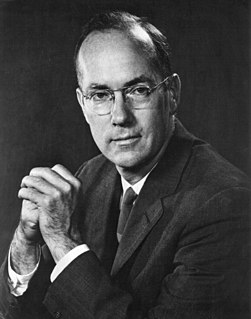
Charles Hard Townes was an American physicist. Townes worked on the theory and application of the maser, for which he obtained the fundamental patent, and other work in quantum electronics associated with both maser and laser devices. He shared the 1964 Nobel Prize in Physics with Nikolay Basov and Alexander Prokhorov. Townes was an adviser to the United States Government, meeting every US President from Harry Truman (1945) to Bill Clinton (1999).

Amar Gopal Bose was an American entrepreneur and academic. An electrical engineer and sound engineer, he was a professor at the Massachusetts Institute of Technology (MIT) for over 45 years. He was also the founder and chairman of Bose Corporation.
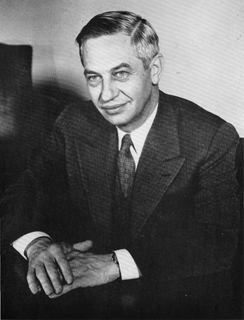
Lee Alvin DuBridge was an American educator and physicist, best known as president of the California Institute of Technology ("Caltech") (1946–1969.

Altec Lansing is a U.S. audio electronics company founded in 1927. Their primary products are loudspeakers and associated audio electronics for professional, home, automotive and multimedia applications.
Thiele/Small parameters are a set of electromechanical parameters that define the specified low frequency performance of a loudspeaker driver. These parameters are published in specification sheets by driver manufacturers so that designers have a guide in selecting off-the-shelf drivers for loudspeaker designs. Using these parameters, a loudspeaker designer may simulate the position, velocity and acceleration of the diaphragm, the input impedance and the sound output of a system comprising a loudspeaker and enclosure. Many of the parameters are strictly defined only at the resonant frequency, but the approach is generally applicable in the frequency range where the diaphragm motion is largely pistonic, i.e. when the entire cone moves in and out as a unit without cone breakup.

Powered speakers, also known as self-powered speakers and active speakers, are loudspeakers that have built-in amplifiers. Powered speakers are used in a range of settings, including in sound reinforcement systems, both for the main speakers facing the audience and the monitor speakers facing the performers; by DJs performing at dance events and raves; in private homes as part of hi-fi or home cinema audio systems and as computer speakers. They can be connected directly to a mixing console or other low-level audio signal source without the need for an external amplifier. Some active speakers designed for sound reinforcement system use have an onboard mixing console and microphone preamplifier, which enables microphones to be connected directly to the speaker.
Petar V. Kokotovic is professor emeritus in the College of Engineering at the University of California, Santa Barbara, USA. He has made contributions in the areas of adaptive control, singular perturbation techniques, and nonlinear control especially the backstepping stabilization method.
James Loton Flanagan was an American electrical engineer. He was Rutgers University's vice president for research until 2004. He was also director of Rutgers' Center for Advanced Information Processing and the Board of Governors Professor of Electrical and Computer Engineering. He is known for co-developing adaptive differential pulse-code modulation (ADPCM) with P. Cummiskey and Nikil Jayant at Bell Labs.

Rutherford "Gus" Aris was a chemical engineer, control theorist, applied mathematician, and a Regents Professor Emeritus of Chemical Engineering at the University of Minnesota (1958–2005).
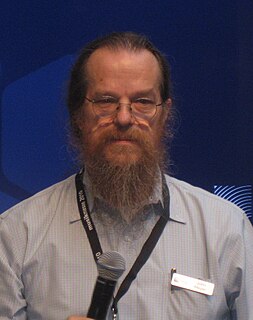
John Meyer is a pioneer in the sound reinforcement industry. In 1979 he founded Meyer Sound Laboratories with his wife, Helen Meyer.
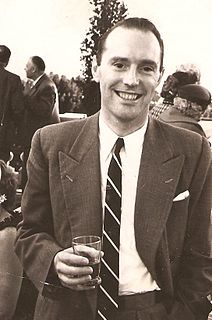
Harry Bolton Seed was an educator, scholar, former Professor at the University of California, Berkeley. He was regarded as the founding father of geotechnical earthquake engineering.
Albert Neville Thiele, OAM, generally known as Neville Thiele and publishing under the name A. Neville Thiele, was a distinguished Australian audio engineer.
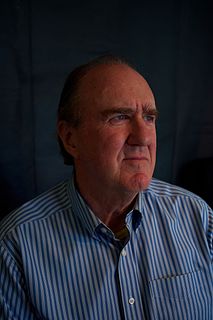
Cliff Henricksen is a musician, inventor and audio technologist. He is self-taught as a musician with a graduate degree in mechanical engineering at Massachusetts Institute of Technology (MIT). Throughout his career Cliff has found innovative ways to apply engineering basics to electro acoustics and to audio technology as it applies to music and in particular to live music performance. He has invented and engineered a wide variety of technologies and products well known in the world of professional audio. Today he balances work in audio and work as a performing musician.
A transmission line loudspeaker is a loudspeaker enclosure design which uses the topology of an acoustic transmission line within the cabinet, compared to the simpler enclosures used by sealed (closed) or ported designs. Instead of reverberating in a fairly simple damped enclosure, sound from the back of the bass speaker is directed into a long damped pathway within the speaker enclosure, which allows far greater control and use of speaker energy and the resulting sound.
John Ernest (J.E.) Benson was an Australian engineer and researcher who contributed to studies on piezoelectric crystals, television and sound systems, particularly loudspeakers.
Pan Wen-Yuan was a Chinese-American electrical engineer. Following a three-decade-long career as a researcher at RCA, he played a key role in establishing the integrated circuit (IC) industry in Taiwan in the 1970s and is known as the "father" of Taiwan's IC industry. After his death, the Industrial Technology Research Institute of Taiwan set up the Pan Wen Yuan Foundation and the Pan Wen Yuan Prize to reward people who have made significant contributions to Taiwan's semiconductor industry. Pan was a fellow of the Institute of Electrical and Electronics Engineers (IEEE) and the American Association for the Advancement of Science (AAAS).
References
- ↑ Ethan Winer (12 November 2012). The Audio Expert: Everything You Need to Know About Audio. Taylor & Francis. pp. 609–. ISBN 978-1-136-12613-0.